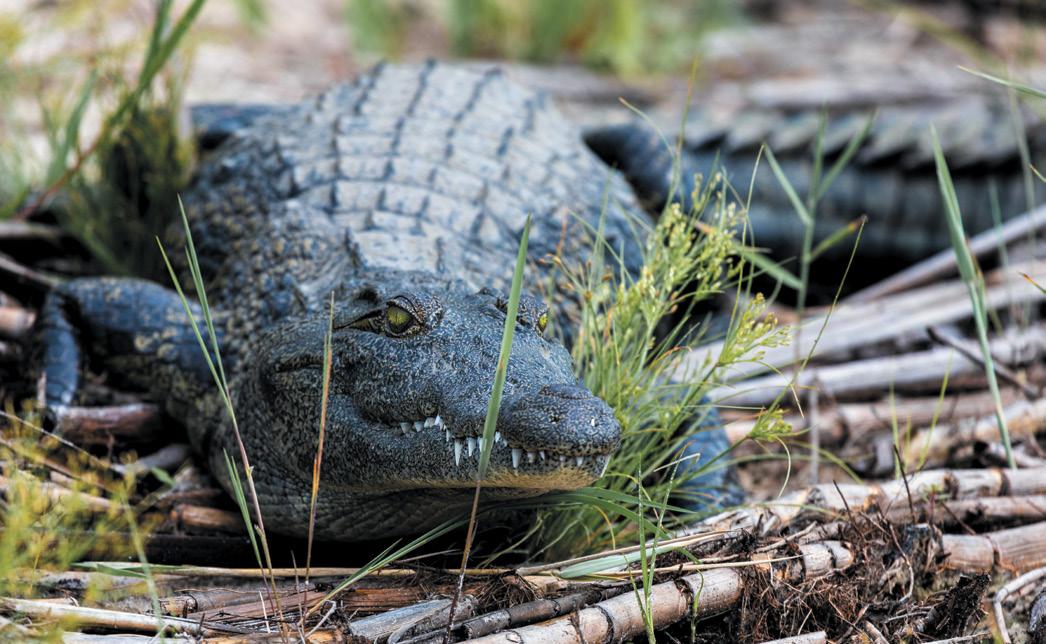
4 minute read
The Zambezi Region in the wet season
from FlyNamibia May 2024
The rainy summer months are often thought to be a less than ideal time to visit Namibia's wildlife and nature hotspots, but a trip during this period can be an incredibly rewarding experience in its own right. Namibia, and the lush northeastern Zambezi Region, is a year-round destination.

It is well-known that the winter months are better for game viewing, especially when visiting game parks like Etosha or heading into the wildlife areas of Namibia’s north-east. Besides having to survive temperatures that can push the mercury up into the high 30s, they are also the dry months. This means no rain and more importantly, less foliage to better see animals in areas with dense bush. The natural waterholes in the veld have dried up by this time, therefore the manmade waterholes are hives of activity acting as natural wildlife magnets.

In the rainy season, the opposite is true. With plenty of water in the veld, the animals disperse and dense foliage obstructs visibility. This should not be a deterrence as this time of year holds its own charm. The greenery of the bush gives a visually pleasing backdrop to sightings and there are baby animals in abundance. This was especially true of warthogs as we discovered in Nkasa Rupara National Park. We barely saw anything else.

“You’re gonna die of the heat”, most said when they heard of our plans. Yet, apart from three or four days of humid, hot days, temperatures were bearable and even the couple of rain showers we had were welcomed as they cooled down the world around us.

November to April is the best time for birding because during this time migrants are present. Some of the standout birding moments were driving into the Kwando Core Area of Bwabwata National Park and seeing endless numbers of Fish Eagles. At some point, we counted them while sitting on the ground within a 20-square-metre area. Another was in Nkasa Rupara National Park where two southern Carmine Bee-eaters caught a ride on the back of a warthog.

If I were a first-time traveller to the region, I would not believe that this area swarms with elephants during the dry season. Having migrated mostly to Botswana for the season the only trace I saw of the gentle giants was old droppings.
Not deterred, it was fun to identify the differences between puku, lechwe and reedbuck. On an early morning game drive we watched a lechwe cross the water at the Horseshoe bend of the Kwando. We quickly reached for our binoculars when we noticed a submarine-like shape following the lechwe now swimming at double speed. To our surprise, as soon as the antelope made it to dry land, a snapping crocodile jaw broke through the water in a last-ditch but futile attempt to catch breakfast.

While we didn’t see any big cats, we had the privilege of watching African wild dogs bathe and chase each other through a muddy pool. It was ten minutes of pure joy for all of us as we watched these dangerous predators goofing around like puppies.
Even during the wet season, most areas are accessible and no expert driving skills are needed. When planning your next trip there, don’t be scared to go against what is recommended –you might just see something special.










